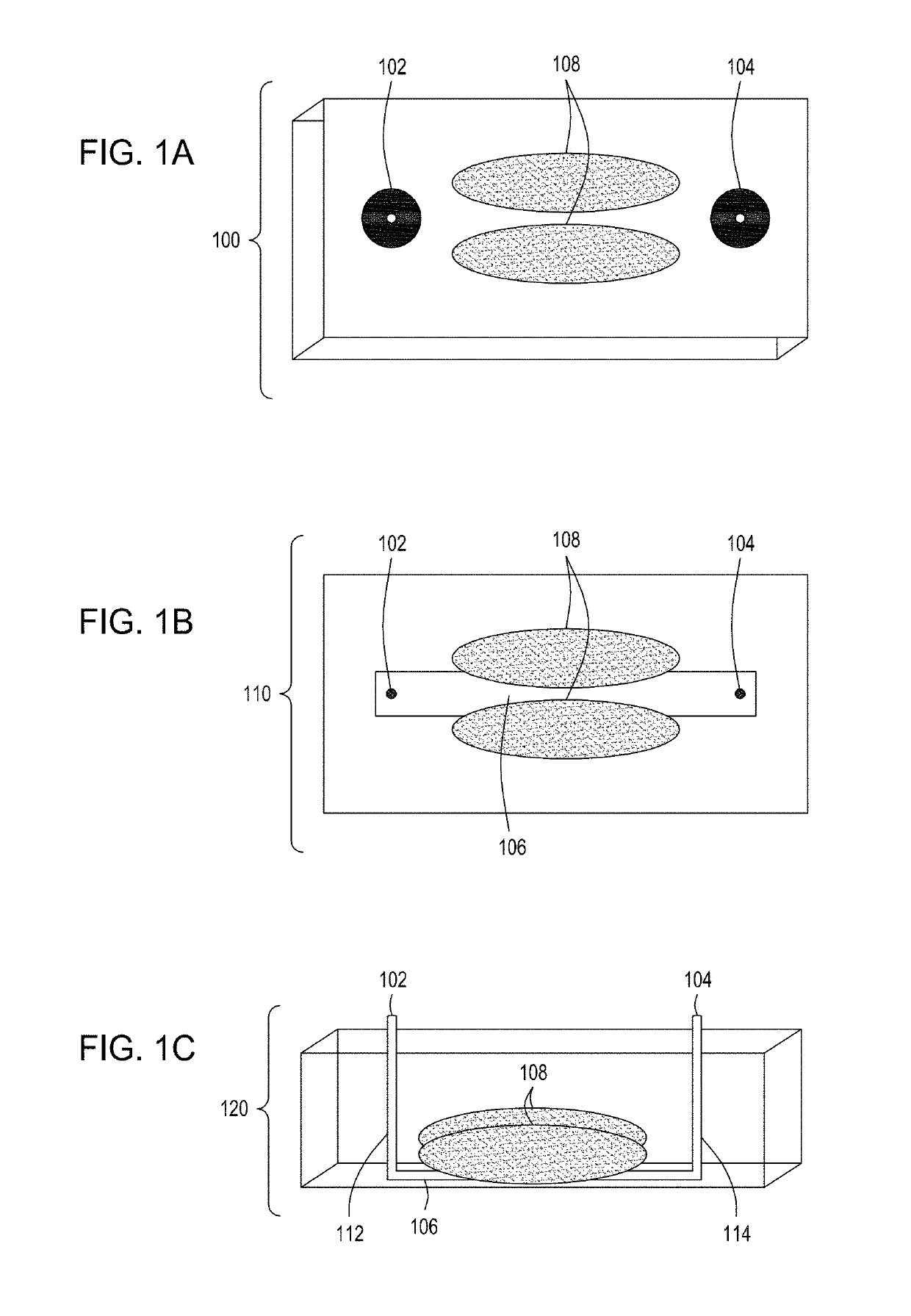Modification of cells by introduction of exogenous material
a cell and exogenous technology, applied in the field of cell modification, can solve the problems of low electroporation efficiency and/or cell viability, and the traditional electroporation system is not easily automated or incorporated into the automated cell processing system
- Summary
- Abstract
- Description
- Claims
- Application Information
AI Technical Summary
Benefits of technology
Problems solved by technology
Method used
Image
Examples
example 3
sure Sensing and Flow Rates
[0168]An inline flow sensor measurement was used to indicate when, after the liquid containing the cells and DNA flowed through the FTEP chip, where the inlet reservoir was emptied. Approximately 65 μL of liquid was loaded into the input reservoir and the automated FTEP module was powered on. Looking at the graph at the top of FIG. 27, it can be seen that after a few short startup transients, the flow rate shows about ˜3 standard cubic centimeters per minute (SCCM) of flow for almost 8 seconds (8000 ms) until it jumps to 24 SCCM. This transition occurs at an end of run trigger, which is an indicator that the liquid containing the cells and DNA has been processed through the FTEP device and that air is not flowing through the FTEP device. That trigger may constitute detection of an increase flow rate or a sudden fluctuation (increase or decrease) in the pressure of the air (such as at a conduit leading from a syringe pump). In one preferred embodiment, the ...
PUM
| Property | Measurement | Unit |
|---|---|---|
| width | aaaaa | aaaaa |
| width | aaaaa | aaaaa |
| width | aaaaa | aaaaa |
Abstract
Description
Claims
Application Information
 Login to View More
Login to View More - R&D
- Intellectual Property
- Life Sciences
- Materials
- Tech Scout
- Unparalleled Data Quality
- Higher Quality Content
- 60% Fewer Hallucinations
Browse by: Latest US Patents, China's latest patents, Technical Efficacy Thesaurus, Application Domain, Technology Topic, Popular Technical Reports.
© 2025 PatSnap. All rights reserved.Legal|Privacy policy|Modern Slavery Act Transparency Statement|Sitemap|About US| Contact US: help@patsnap.com



